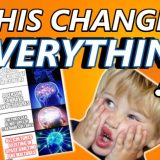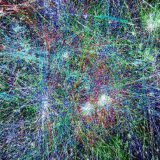Hybridity
The idea of “hybridity” really struck me this week in class. I’ve heard of similar concepts about culture before (although I can’t remember where). Culture isn’t made up of just one singular thing. It is influenced by multiple areas in your life. The two most driving forces designing one’s culture include one’s heritage, and one’s environment. Simultaneously, these two forces continually interact and forming an individual’s cultural identity. A person’s interaction with the environment continuously creates new experiences and memories, adding new pages to one’s history.
Our individual story lies on a continuum. In the early stages of life our family might teach us about our history, where we come from, and teach us how to practice their traditions. These activities instill a feeling of personal identity, and help us to make sense of who we are. As we grow older, we also make connections with the world around us. We meet new people and participate in shared traditions between larger groups of people. We participate in other cultures and draw from them, sometimes with awareness.
In class, we discussed several ideas I’d also like to share my input on. The idea of prosthetic memory was somewhat new to me. I always try to keep context in mind when I gather information from the media. However, I never thought about how mass media might influence our own memories. How can I apply this idea to understand the Vietnamese community in America? How might the American media have shaped the perceptions of refugees about their home country? I saw an example of this phenomenon in Otsuka’s book titled When the Emperor was Divine. After internment the family came back to a different America. One in which the mass media constantly framed all Japanese people (including Japanese Americans) as “the enemy.” In Otsuka’s novel the reader is able to experience only a small fraction of how the Japanese in America were treated post-World War 2.
Another concept, somewhat related to the last, was “collective trauma.” I had read about this concept in some of the research articles I used for my project on Vietnamese refugees last fall. However, when it was brought up in class I found myself re-applying it to everything I had learned since then. I couldn’t help but wonder if this concept can be found in the Vietnamese community in America, now that there are three, four, and perhaps five generations of Vietnamese Americans in the United States.
The last point I would like to bring up in this post, is the relationship between each generation of Japanese Americans that they had with each other. A Japanese person could be referred to based on what generation they were, such as “issei,” “nisei,” and “sansei.” The relationship between 1st, 2nd, and 3rd generations of Japanese Americans seemed familiar to what I understand about Vietnamese Americans as well.
Valverde hinted at both “collective trauma” and “generational relationships” in her book entitled Transnationalizing Viet Nam. The many tensions caused by the war and assimilation into the United States is deeply rooted in the collective memory of many 1st and 2nd Vietnamese Americans. I see many similar views of each other between older and younger generations in both the Japanese American community and the Vietnamese American community. It would be interesting to compare these relationships to other immigrant groups. There are many different reasons why people choose to immigrate to a new country, and perhaps understanding the why and the how can help us find solutions to the forces that we have control over. Not to curb immigration, but to change the negative circumstances that promote it as the only option.
















